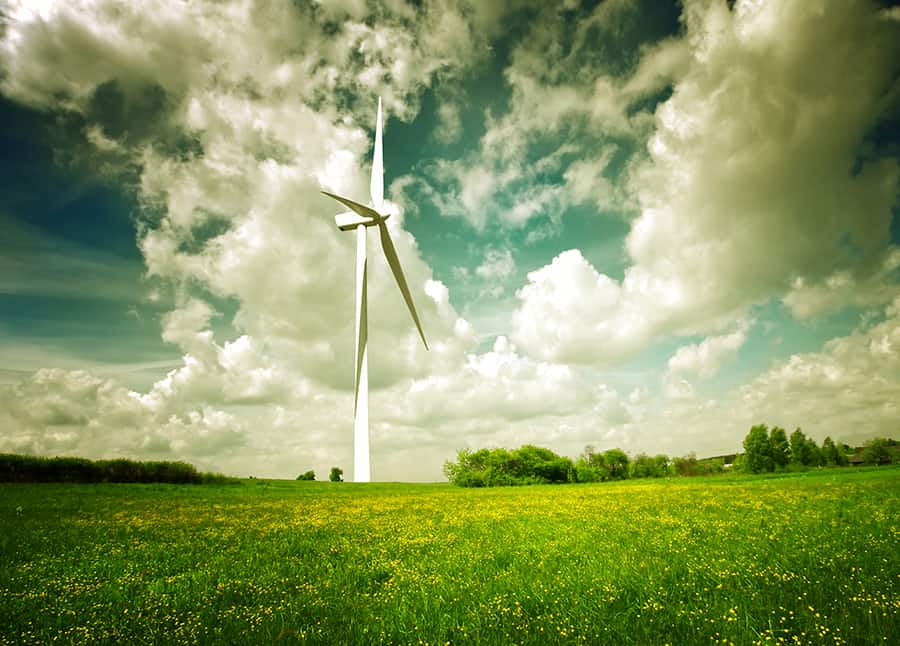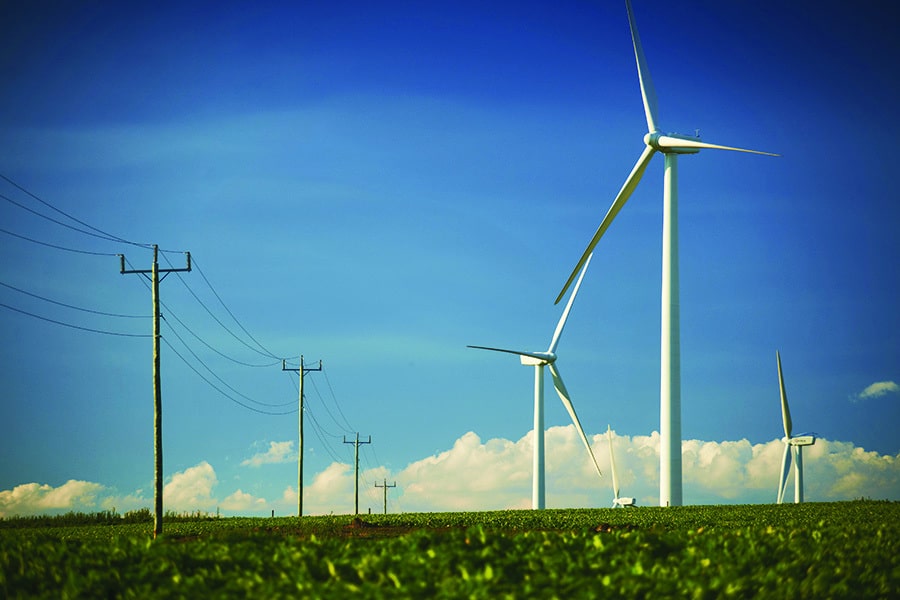Since 2012, the Australian Energy Market Operator has been investigating the potential to integrate excess energy generated by wind turbines around Australia into the National Electricity Market. AEMO has provided Utility with an update on the progress that has been made, and the challenges that lie ahead for the integration of large scale renewable energy into the grid.
In December 2012, the Australian Energy Market Operator (AEMO) published the National Transmission Network Development Plan (NTNDP), in order to facilitate the development of an efficient national electricity network that considers potential transmission and generation investments.
The plan focused on large-scale electricity generation and the main transmission networks that connect this generation to population and industrial centres. Across the wide-ranging document, a number of forecasts and targets were set over a 25-year planning horizon, including a forecast of 8.88GW of new wind generation for the National Electricity Market (NEM) by 2020. This figure is in addition to the approximately 2.67GW already installed as of May 2013.
The NEM design incorporates several features which will assist in effectively managing the expected new wind generation forecast to connect to the national power system. Nevertheless, integrating the level of new wind generation forecast will present challenges in operating the power system and the electricity market. These challenges are expected to arise first in South Australia and Tasmania, where forecast levels of wind generation are highest compared to demand.
Further challenges are expected to arise from technological innovations, including increased distributed generation such as rooftop photovoltaic (PV) panels; and from changing consumer behaviour, contributing to a trend of declining electricity consumption from the power system.
Challenges to power system operation
Currently, it is forecast that there will be an additional 8.88GW of additional wind generation in the NEM by 2020, which will result in a total installed NEM wind generation capacity of around 11.5GW.
The key operational challenges in integrating this amount of wind generation into the NEM are:
• Power system inertia could be reduced, due to displacement of conventional synchronous generation, particularly in South Australia and Tasmania. This would make the control of power system frequency following contingency events more challenging in these areas. While power system frequency control in Victoria, New South Wales and Queensland would not be significantly affected, AEMO must make changes in Tasmania and South Australia to ensure ongoing control of power system frequency within required limits.
• Significant new wind generation can reduce existing interconnector transfer limits, particularly under conditions of low demand and high wind speeds when wind generation forms a large percentage of the generation mix.
• Early modelling indicates that, without action, up to 5,750GWh and 1,260GWh of the maximum potential wind generation energy in Victoria and South Australia respectively could be curtailed due to network limitations. This represents around 35 per cent and 15 per cent respectively of the energy potentially available from wind generation installed in these regions.
• Increasing levels of wind generation will reduce power system fault levels at some locations, which may lead to further limitations on the operation of wind generation and high voltage direct current (HVDC) links.
Options to address these challenges
AEMO could potentially manage these power system impacts with existing processes and systems. This could involve either using constraint equations in the central dispatch process to limit wind generation, or as a last resort, using market intervention through issuing directions to synchronous generators to ensure sufficient levels of power system inertia are maintained to allow adequate control of power system frequency.
A number of other options could be considered to assist integration of this generation. These would require changes to processes, systems and regulatory instruments. Some of these involve:
• Establishing new ancillary service requirements to provide services that allow adequate control of power system frequency under conditions of low power system inertia.
• Investing to install purpose-built synchronous condensers to maintain system inertia and power system fault levels.
• Investing to allow some existing generating units to operate either with reduced minimum load or as synchronous condensers. This would allow existing generation to maintain system inertia and power system fault levels during periods of high wind generation.
• Establishing new control schemes, or modifying existing schemes, to ensure adequate control of power system frequency under conditions of low power system inertia.
AEMO will investigate the likely costs and potential benefits of these options, as well as considering any other feasible options or proposals identified by other parties.
Short-term actions
AEMO is currently undertaking further work examining the operation of the power system with increased levels of renewable energy generation, including wind and PV generation, with a particular focus on South Australia.
Some technical changes will be required to operational processes and systems in response to increasing levels of renewable energy in the NEM, such as changes in the calculation of contingency frequency control ancillary services requirements, to assist in maintaining system security.
However, to date AEMO has not identified a clear need for more substantial changes to AEMO systems or processes, or to existing market arrangements and design. The existing market design, and AEMO operational system and processes, already have a number of features that assist in the integration of renewables, such as five-minute dispatch, inclusion of large-scale renewable in the dispatch process, and accurate forecasting of wind generation output.
Longer-term actions
AEMO will improve its modelling of wind generation in its operational and planning tools and processes, to improve their accuracy with increasing levels of wind generation.
This raises broader questions about the challenges facing the power system, market, and regulatory framework due to the pace of technological innovation altering the supply mix, and changing consumer behaviour, particularly in response to high electricity prices.
At present, AEMO is continuing to follow up on recommendations around operational issues identified in its previous work, particularly in the South Australian and Tasmanian regions, and continues to work towards the outcomes required based on the 2020 RET targets.
Revisions to the RET
At the time of printing, a decision had not been made on whether the Federal Government would retain, revise or abolish the 2020 RET instated by the previous Government. This decision may have implications on the wind target for 2020, however, every effort has been taken to ensure the information presented in this article is relevant and applicable, regardless of any changes to the RET.














